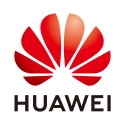Growing 5G in Intelligent Manufacturing: An Insight into Midea's 5G Fully-Connected Factory
The white stamping machines are connected in series by a track machine to complete one-stop cutting, drilling, and stamping free of manual operations. When the container moves forward to a fixed destination through the track machine, the hoist rises rapidly and transports the container to the assembly workshop. Thanks to 5G, a washing machine comes off the product line every 15 seconds in this factory, and this figure will be reduced to 10 in the near future. #sponsor
November 7, 2022

The white stamping machines are connected in series by a track machine to complete one-stop cutting, drilling, and stamping free of manual operations. When the container moves forward to a fixed destination through the track machine, the hoist rises rapidly and transports the container to the assembly workshop. Thanks to 5G, a washing machine comes off the product line every 15 seconds in this factory, and this figure will be reduced to 10 in the near future.
This is the manufacturing process in Midea's 5G fully-connected factory on its Jingzhou campus. The campus has more than 1,000 automated machines across 15 application scenarios. Each production phase is seamlessly connected through 5G terminals with faster, automated machine operations, which streamlines the complex pipelines in the ordinary workshop. Midea Group, China Mobile, Huawei, and other companies have built this benchmark for 5G smart manufacturing. It represents the first time that an industrial campus has utilized 5G in all scenarios and implemented a fully-interconnected manufacturing process. The campus went live on August 18th this year as the world's first fully-connected 5G home appliance manufacturing facility, as well as the 5G smart factory with the largest number of 5G terminals and application scenarios, and the deepest level of service integration.
In terms of quality management, 5G enables Midea's self-developed intelligent platform to implement intelligent quality inspection, improving the faulty part detection rate by 10%, which helps a lot in ensuring high quality, online visualized quality management, and intelligent automated inspections.
Figure 1: 
Figure 2:  5G Intelligent quality inspection
5G Intelligent quality inspection
In terms of flexible production, 5G + MEC edge cloud leverages 5G's low latency to collect and predictively maintain manufacturing process data in the production area, and load the robot control process model to adjust the robot's actions. Thanks to 5G private networks and intelligent industrial brain, applications like 5G + MES and 5G + industrial computers are used to extract, analyze, and predict service data, for closed-loop optimization of the entire manufacturing process.
Figure 3:  5G + robot
5G + robot
Figure 4:  5G + MES
5G + MES
In factory logistics, thanks to 5G's low latency and high reliability, an intelligent logistics platform has been applied, based on which, 5G-powered AGV and forklift trucks are dispatched, helping greatly streamline the supply, production, distribution, warehousing, and shipment processes.
Figure 5:  5G + AGV scheduling
5G + AGV scheduling
5G has been fully utilized in campus management. In scenarios like device reconstruction, energy management, production safety, environmental protection monitoring, and campus security, monitoring devices, apparatus, and cameras are connected over 5G to reduce the dependence on cables. This enables projects to be completed in a short period of time while also reducing costs.
Figure 6:  5G + facial recognition
5G + facial recognition
Wang Liang, who works at the Information Technology Development Division of Midea's Laundry Appliance Dept. explained the very objectives and plans for building 5G factories in Jingzhou. "Our overall plans were to use the advanced digital and intelligent technologies to boost logistics efficiency and support robot automation, covering a total of 133 digital scenarios. We wanted to make them benchmarks not just in Midea but also within the entire industry. Now, the benefits are showing: A washing machine comes off the product line every 15 seconds, the direct delivery rate has been doubled, the inventory has been reduced by 50%, and the labor cost per product has been reduced by 30%."
The deterministic hundred Mbps at devices and thousand Mbps of uplink bandwidth are the most pressing needs for 5G fully-connected factories to support high-bandwidth services, such as intelligent quality inspection. Eric Bao, President of Huawei's DIS Product Line, said that China Mobile and Huawei have created high-precision laser point cloud 3D modeling simulation to perform simulation planning based on the factory environment, and terminal service models and distribution. The modeling precision reaches 99% and the simulation matching degree exceeds 90%, thus ensuring the deterministic rate for each access terminal after the network is deployed. China Mobile and Huawei continue to innovate based on 5G Distributed Massive MIMO to deliver over 1 Gbps of deterministic uplink rate per km2. In addition, an unprecedented indoor distributed small base station allowing for built-in adjustable beams was also used to mitigate interference between cells, and this can give rise to a further 10% increase in uplink capacity.
China introduced a new grand plan for building 5G factories in September this year. According to this new initiative plan for 2021 to 2025, tens of thousands of enterprises will be incentivized to build 5G fully-connected factories. China Mobile has always played a leading role in promoting 5G's applications. According to Zhang Fei, deputy manager of Industrial Energy Development Dept. of its Enterprise Information Service Business Division, China Mobile develops more than 100 industry-leading benchmark projects every year to promote large-scale replication in vertical industries. The Jingzhou factory for Midea is one of the examples that it has developed based on Huawei's technologies. China Mobile, Midea, and Huawei also developed and released a guideline on building 5G networks and applications in the home appliance industry in Hubei to provide standard solutions for the rest of the industry to emulate.
This content is sponsored by Huawei.
You May Also Like


_International_Software_Products.jpeg?width=300&auto=webp&quality=80&disable=upscale)







